I have my desk facing the windows of our home office so that I can be easily distracted, and sometimes this strategy really pays off. For the last several days, I’ve had a hard time tearing myself away from my windows because of the steady stream of birds that are visiting to eat the ripe Flowering Dogwood (Cornus florida) and Blackhaw Viburnum (Viburnum prunifolium) fruit from the trees outside.

Both Flowering Dogwood and Blackhaw Viburnum have fruit that looks like a berry but is actually a drupe, a type of fruit that has a fleshy outside, and a single seed inside encased in a stony covering. A peach is an example of a drupe. The fleshy outside is perfect for tempting a bird or small mammal to eat it. The seed goes through the animal’s digestive tract and is later ‘dispersed’ complete with fertilizer to help give a new plant a good start.
The birds went for the Dogwood fruit first. This seems appropriate, since Flowering Dogwood blooms a few days earlier than Blackhaw Viburnum. A flock of American Robins swooped in to eat, with each Dogwood hosting three, four, five, or more birds at once, bobbing in and out of sight as the branches swayed up and down from the activity.
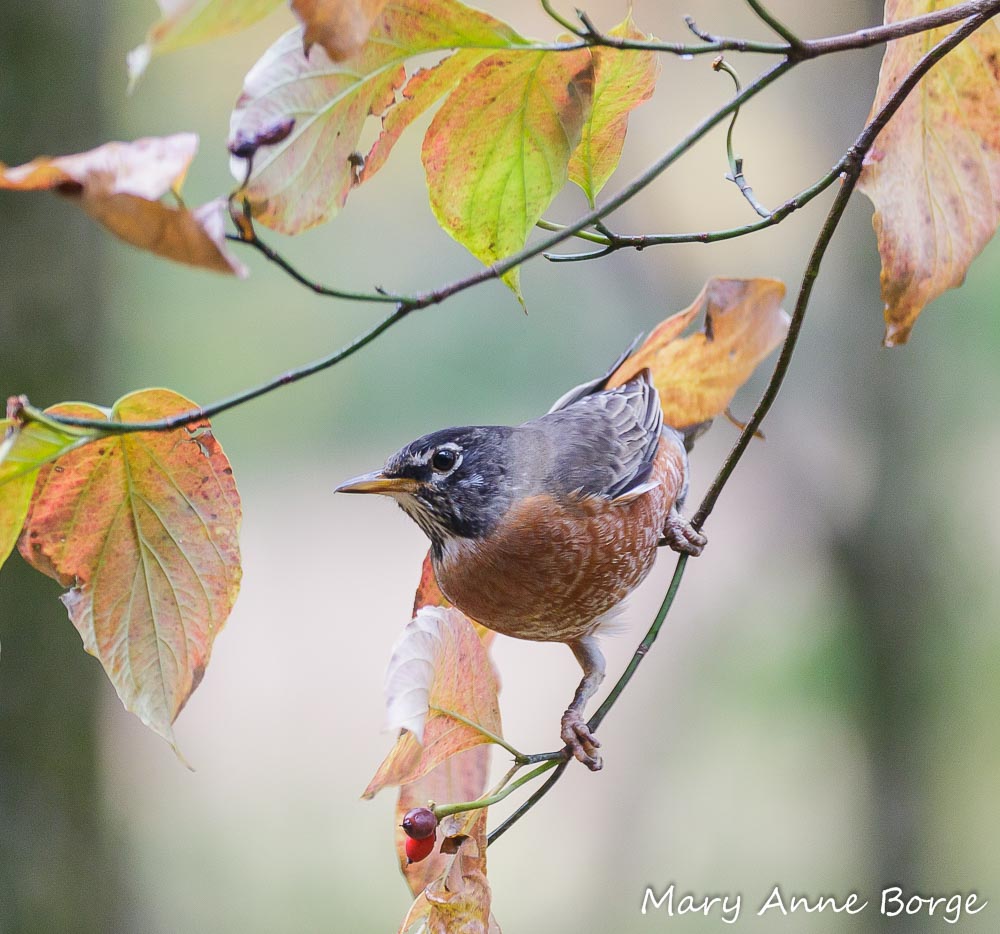

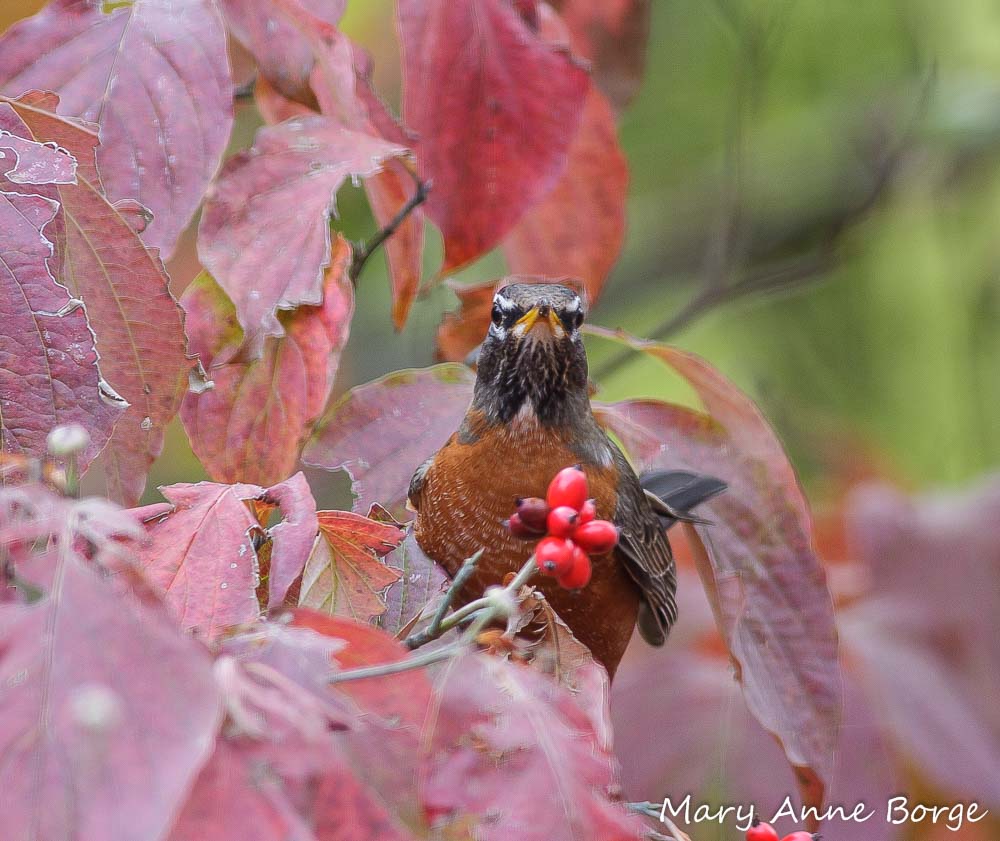
Several Northern Flickers alighted in the trees, staying a while to join in the feast.
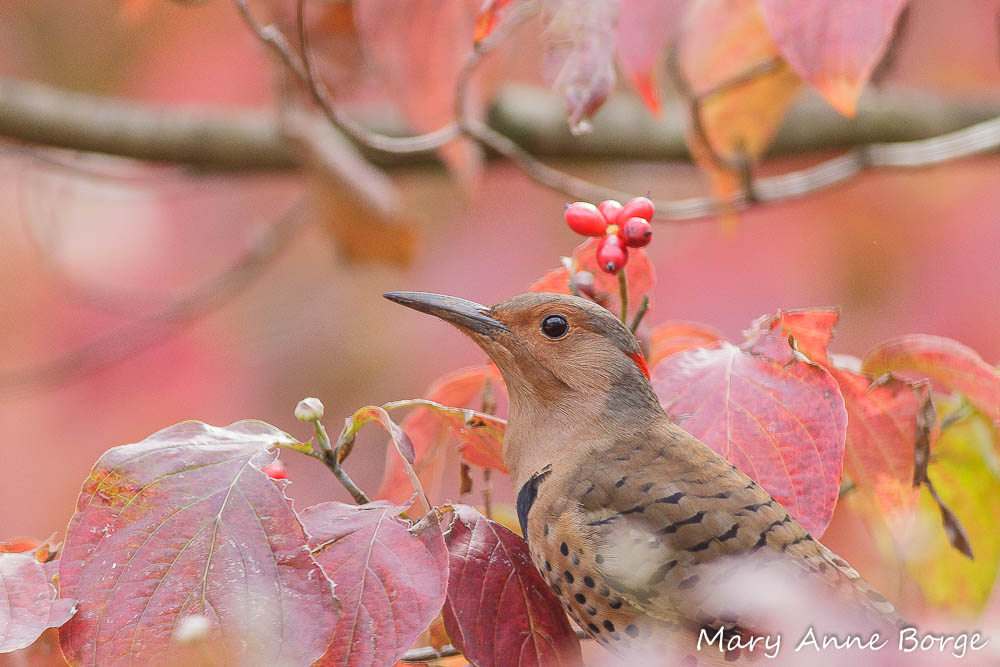

Other more cautious birds made a swift pass to grab a bite, then flew on to enjoy it in a less congested location. At least three Hermit Thrush stopped by,

a few Red-bellied Woodpeckers,

and even Yellow-bellied Sapsuckers supplemented their diet with fruit in between their usually forays drilling holes in tree bark for the sap that will ooze out, and for the insects that are attracted to the sap.
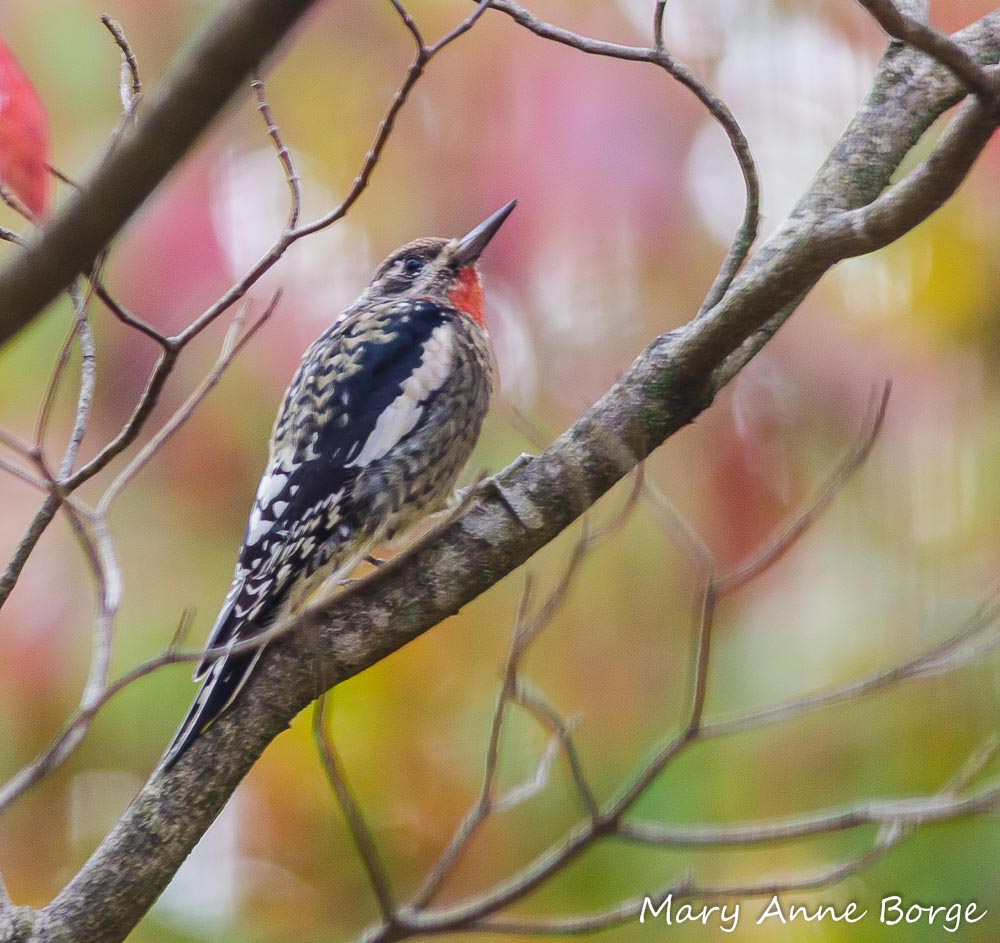
Outside, I hear other birds and see them ignoring this bounty of fruit, relying on different food sources. Brown Creepers and White-breast Nuthatches are active in trees nearby, probing the trunks for insects sheltering in the bark grooves. Brown Creepers start from the bottom of a tree trunk and work their way to the top,
while the Nuthatches move in the opposite direction.
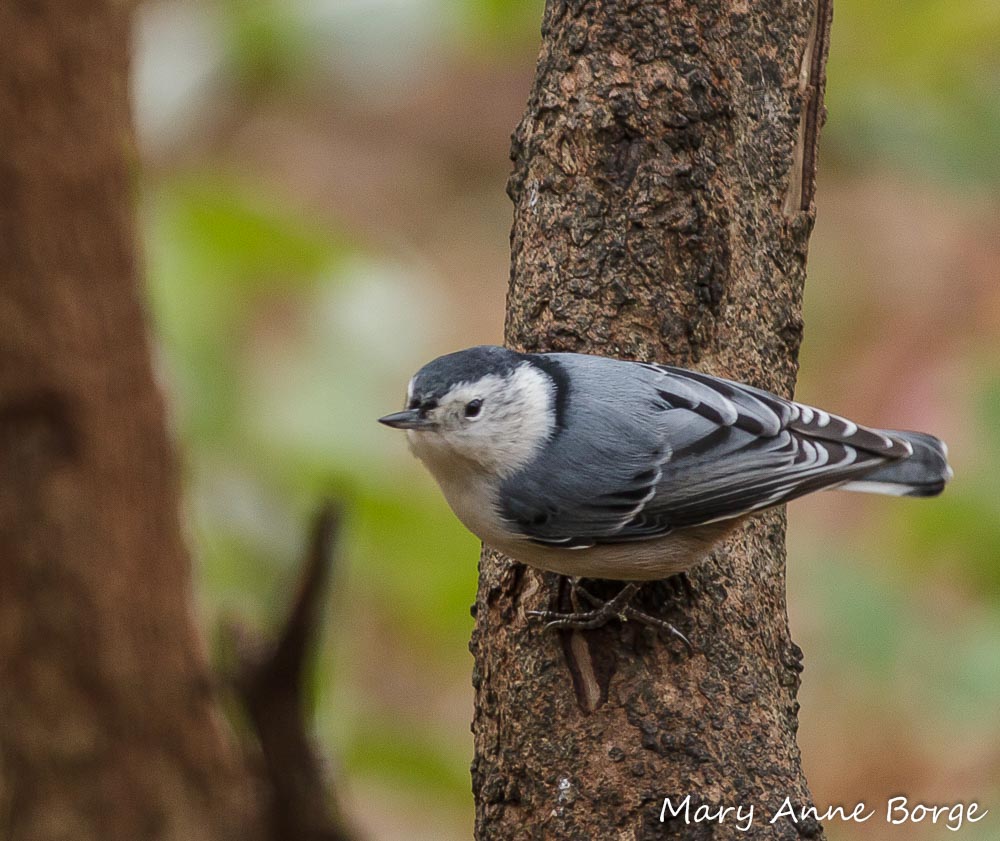
Dark-eyed Juncos and White-throated Sparrows recently returned for the winter. They’re busy probing the bushes and fallen leaves for insects, seeds and fruit.
While I watched, a Red-tailed Hawk swooped in, scattering the smaller birds, but only briefly deterring them from their foraging. The Red-tail perched nearby for a few minutes, silhouetted against the sky, then left with empty claws.

The Dogwood fruit is just about all eaten now, but the birds are still working on the Blackhaw Viburnum.

Robins are consuming most of the Blackhaw fruit, but the Sapsuckers fly in to supplement their diet, too. Squirrels are also taking advantage of this feast.

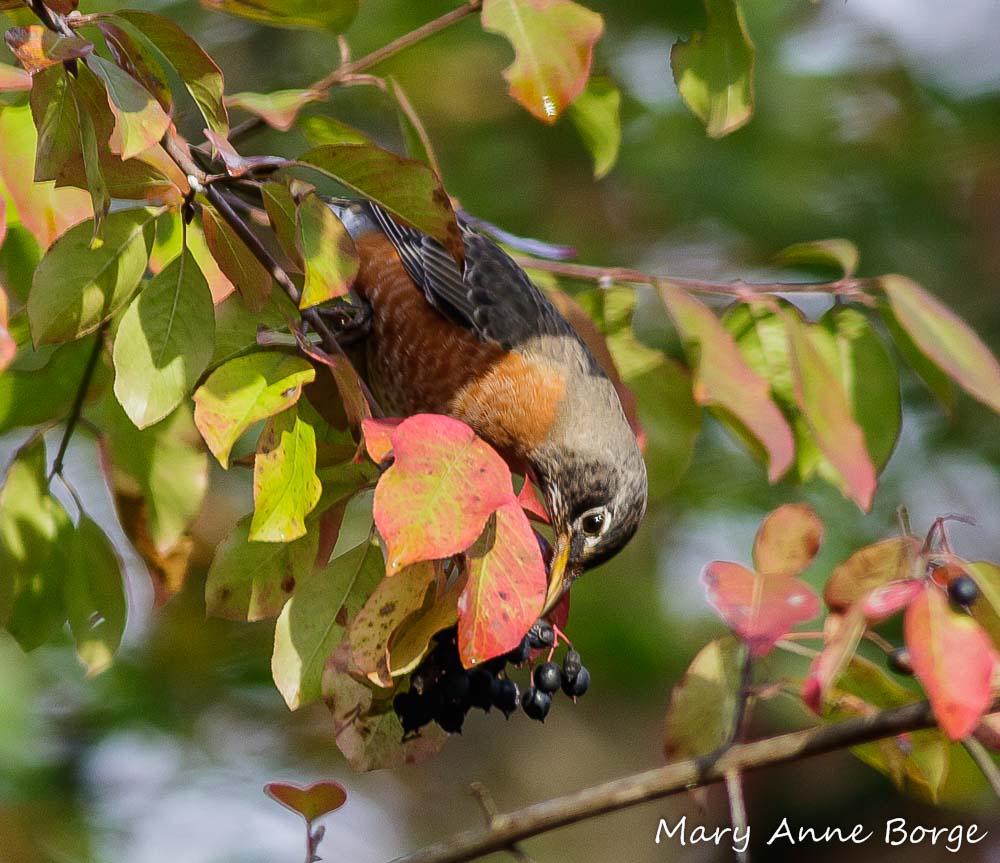
The flower buds that are visible at the same time these plants are offering their ripe fruit promise that the show will continue next year. I just hope that when these plants bloom next spring the bees, flies, butterflies and other flower visitors are as successful as they were this year in pollinating the flowers.
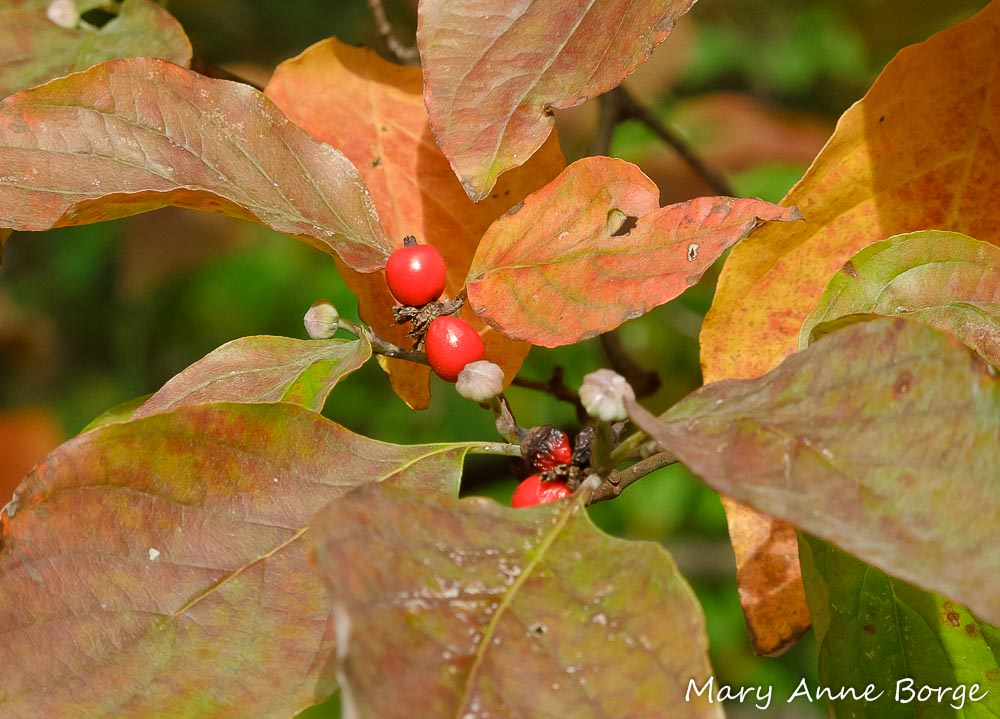
So much action, and I live in a townhouse development in central New Jersey! Who needs to travel hundreds of miles to see the wonders of nature, when they can be present in your own backyard? Just provide the native plants that the animals we live with depend on. We humans depend on these plants and animals, too.

Related Posts

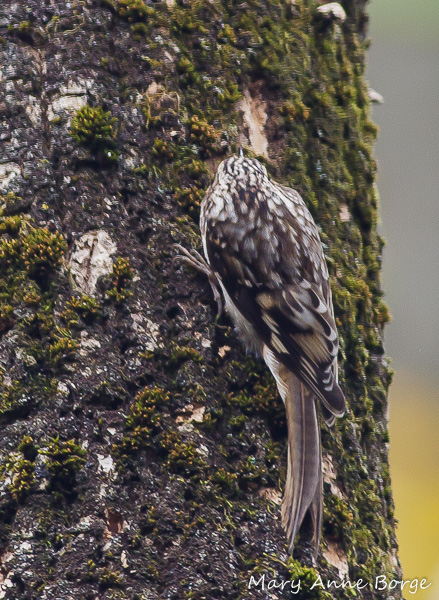
This is a very good article. I’m using some of it for a school report.
Great! I’m glad you found it helpful.
Wonderful , Amazing!!! Photos!! Thanks for sharing!
Thank you, Ann!
Pingback: Invasion of the Cedar Waxwings! | The Natural Web
Lovely entry! Such fantastic photos (as usual). It makes me want to plant a flowering dogwood and blackhaw Viburnum! I enjoyed seeing the photo of the fruit and the flower bud. And I had never heard of a brown creeper. They are a pretty little bird, of subtle beauty!
I’m glad you enjoyed the post! The more native plants you have in your yard, the more interesting critters you will see!
Excellent photos and article, as usual!!!
Thanks, Jean!
Your writing and photos are both exquisite. Thank you for yet another expose’ of our local, natural world and its web of connections.
Thank you!
Beautiful photos!
Thanks, Pat!
“Just provide the native plants that the animals we live with depend on.” You are right! In my garden grows Cornus mas and the birds loving it!
You pictures are wonderful! I love the dreamy colors a lot!
Thank you!
Looks like your office window offers the best kind of distraction. Your pictures are amazing. Our dogwoods are laden with fruit this year. They are situated on our property such that it’s hard to get a good look at who is feasting among the branches. Your pictures give me a much better idea of who might be enjoying a meal. It truly feels like winter is on the horizon now that our temperatures have dropped below freezing at night and our winter birds have made their return.
I love hearing the sounds of the white throats, nuthatches, and all the various woodpeckers as I walk the dogs in the morning.
I love hearing the birds, too! It was great to see them through the windows, but it’s even more magical to hear them outside.
I look forward to your posts. Your photographs are delightful and hopefully your readers will learn how important native plants are to our insect and bird populations. You and Doug Tallamy are a couple of my favourite nature writers. Dogwoods, viburnum, and oak trees here attract so many birds to our small 1/3 acre property. Plus we leave as many leaves as possible in the garden beds and under the trees behind our house. Great job sharing the beauty of nature!
Thank you, Melissa! That’s quite a complement. Thanks for spreading the word about native plants!
Hi Mary Anne,
By far my favorite issue and I enjoy them all. I would like to know a little more about your approach to getting such perfect pictures without disturbing the subjects. Are they taken through a window, how close? Hand held?
Hi Mike! I think all were taken with my 400 mm lens, which allows me to keep a distance. Other than that, there’s a mix here. I was able to use a tripod for all of the Robin pics in this post, the Northern Flicker, the Red-bellied Woodpecker. The photos on Dogwood were from inside, through a window, the shots where they are on Blackhaw Viburnum were outside. The Red-tail was outside, and hand held, also the Hermit Thrush. And I do a little post-processing that includes cropping the image to get what I want in the end photo.
The Flowering Dogwood is hard to keep healthy where I live in NW PA, but my Staghorn Sumac, Washington Hawthorn and Red-twig and Rough Leaved Dogwoods have brought in the Crows, Robins and Starlings into my yard. Cranberry Bush Viburnum has beautiful fruits but seem to be left until the Spring when they get devoured by the Robins.
Yes, Cranberrybush Viburnum fruit is usually eaten much later in winter, along with Winterberry Holly and Red Chokeberry.
Great info! Was wondering when someone would eat the cranberry viburnum fruit.
Thanks, Hillary! Cranberrybush Viburnum fruit is usually not eaten until later in the winter, after some freeze and thaw cycles occur.
Lovely!
Thanks, Deb!
Lovely photos! No wonder you were distracted. Plant it and they will come. Even to a townhouse in central NJ!
Thanks, Sarah!
Great shots! Interesting and informative!
Thank you!
This is your most exciting post yet and there have been many. So true that we can create and appreciate the natural beauty everywhere; not just at nature centers. Thanks so much for this treasure trove of photos.
Thanks, Patricia! I’m glad you enjoyed it.
Wonderful account and beautiful images; – many thanks! (From another whose desk faces a window to a yard with native plants.)
Thank you! It’s nice to know I’m not the only one who welcomes distractions from nature!